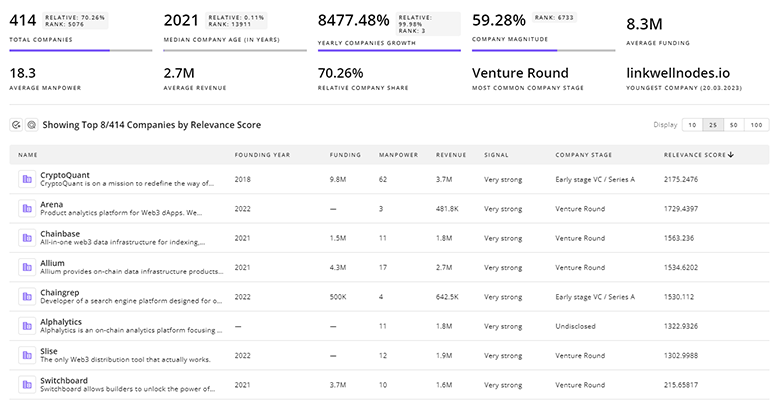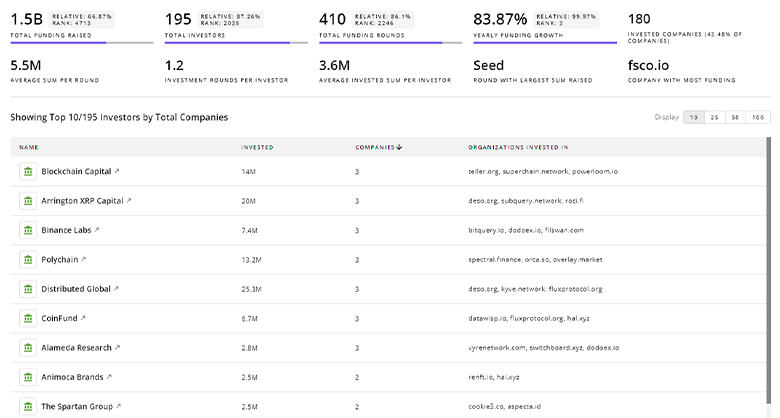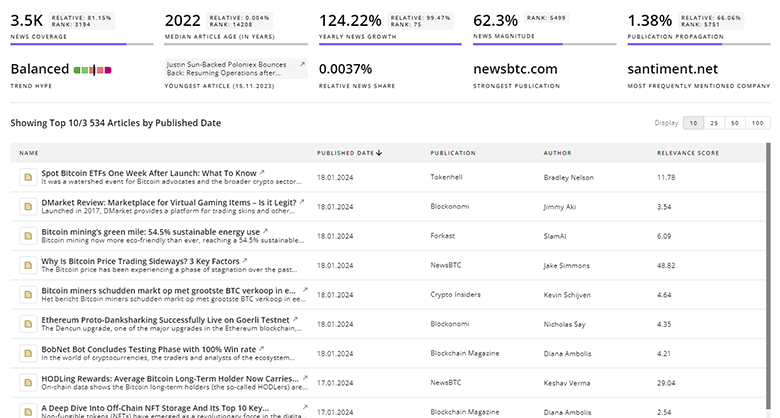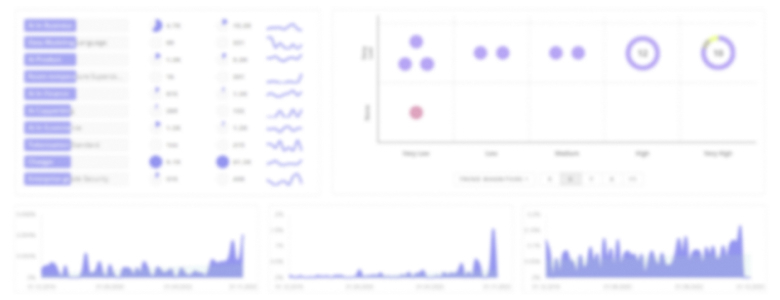
Transit Oriented Development Report
: Analysis on the Market, Trends, and TechnologiesThe transit-oriented development (TOD) sector is experiencing a dynamic period of growth and innovation, as evidenced by the surge in market size, company involvement, and public interest. This transit-oriented development report reveals a 163.01% increase in industry growth indicators over the past five years. Therefore, TOD is becoming increasingly significant in urban planning and sustainability efforts. Despite challenges in funding and news coverage, the sector continues to attract investment, talent, and public curiosity. Emerging trends in this sector include transport simulations, sustainable design software, and more. This cements its position as a pivotal area for business innovation and the creation of sustainable urban environments.
414 days ago, we last updated this report. Notice something that’s not right? Let’s fix it together.
Topic Dominance Index of Transit Oriented Development
To gauge the influence of Transit Oriented Development within the technological landscape, the Dominance Index analyzes trends from published articles, newly established companies, and global search activity
Key Activities and Applications
- Planning & Zoning: Creating comprehensive plans that prioritize mixed-use development near transit stations and new zoning laws encourage higher density, pedestrian-friendly design.
- Sustainable Practices: Incorporating green building standards, energy-efficient designs, and sustainable landscaping to reduce the environmental impact and enhance the resilience.
- Community Engagement: Engaging local residents, businesses, and stakeholders in the planning process to ensure that the development meets the needs and desires of the community.
- Infrastructure Development: Building and upgrading infrastructure to support increased density and improved accessibility.
- Transportation Management: Enhancing the connectivity and efficiency of public transit options to ensure they meet the needs of the community. This includes scheduling adjustments, new routes, or the introduction of additional transit modes.
- Public-Private Partnerships: Collaborating with private developers, investors, and other stakeholders to finance and build TOD projects.
Emergent Trends and Core Insights
- Multi-Modal Connectivity: There is a push towards integrating multiple modes of transportation like biking, walking, ride-sharing, and even emerging options like e-scooters and e-bikes to enhance accessibility and functionality in TOD areas.
- Green & Public Spaces: Incorporating parks, greenways, and public spaces within TOD projects improve the aesthetic and environmental quality.
- Equity & Inclusivity: There is a growing recognition of the need to ensure TOD benefits all community members, including low-income and marginalized groups.
- Adaptive Space Reuse: Instead of new construction, emerging cities are repurposing existing buildings and areas for TOD to preserve historical and cultural aspects.
- Smart City Technologies: Connected infrastructure and technologies like AI enhance the efficiency and livability of TOD areas. They include smart lighting and traffic systems.
- Resilience & Climate Adaptation: Incorporating features that make TOD areas more resilient to climate change impacts, such as flood-resistant infrastructure, energy-efficient buildings, and urban cooling solutions.
Technologies and Methodologies
- Geographic Information Systems (GIS): Extensively used in TOD for mapping, planning, and analyzing spatial data to enhance the development on traffic, accessibility, and land use.
- Building Information Modeling (BIM): Improves building design and management within TODs by enabling a collaborative approach to design and construction, ensuring efficiency and accuracy.
- Transport Simulation & Modeling: Simulates traffic patterns, pedestrian flow, and public transit usage to optimize TOD layout and deliver smooth mobility and access.
- Sustainable Design Software: Software tools that analyze energy use, water consumption, and carbon footprint to create sustainable and green TODs.
Transit Oriented Development Funding
A total of 14 Transit Oriented Development companies have received funding.
Overall, Transit Oriented Development companies have raised $264.6M.
Companies within the Transit Oriented Development domain have secured capital from 19 funding rounds.
The chart shows the funding trendline of Transit Oriented Development companies over the last 5 years
Transit Oriented Development Companies
Get detailed analytics and profiles on 246 companies driving change in Transit Oriented Development, enabling you to make informed strategic decisions.

246 Transit Oriented Development Companies
Discover Transit Oriented Development Companies, their Funding, Manpower, Revenues, Stages, and much more
Transit Oriented Development Investors
TrendFeedr’s Investors tool provides an extensive overview of 15 Transit Oriented Development investors and their activities. By analyzing funding rounds and market trends, this tool equips you with the knowledge to make strategic investment decisions in the Transit Oriented Development sector.

15 Transit Oriented Development Investors
Discover Transit Oriented Development Investors, Funding Rounds, Invested Amounts, and Funding Growth
Transit Oriented Development News
Explore the evolution and current state of Transit Oriented Development with TrendFeedr’s News feature. Access 1.8K Transit Oriented Development articles that provide comprehensive insights into market trends and technological advancements.

1.8K Transit Oriented Development News Articles
Discover Latest Transit Oriented Development Articles, News Magnitude, Publication Propagation, Yearly Growth, and Strongest Publications
Executive Summary
Transit-oriented development is undergoing a period of significant activity and growth, with companies across disciplines contributing to the evolution of sustainable urban environments. The sector's expansion is marked by an increase in market size, public interest, and an influx of talent and investment. Key activities include the development of mixed-use spaces, transportation planning, and the application of sustainable design principles. Emergent trends point towards a future where urban spaces are walkable, connected, and environmentally responsible. The technologies and methodologies adopted reflect a commitment to innovation and efficiency, with BIM and green architecture at the forefront.
We're looking to collaborate with knowledgeable insiders to enhance our analysis of trends and tech. Join us!













